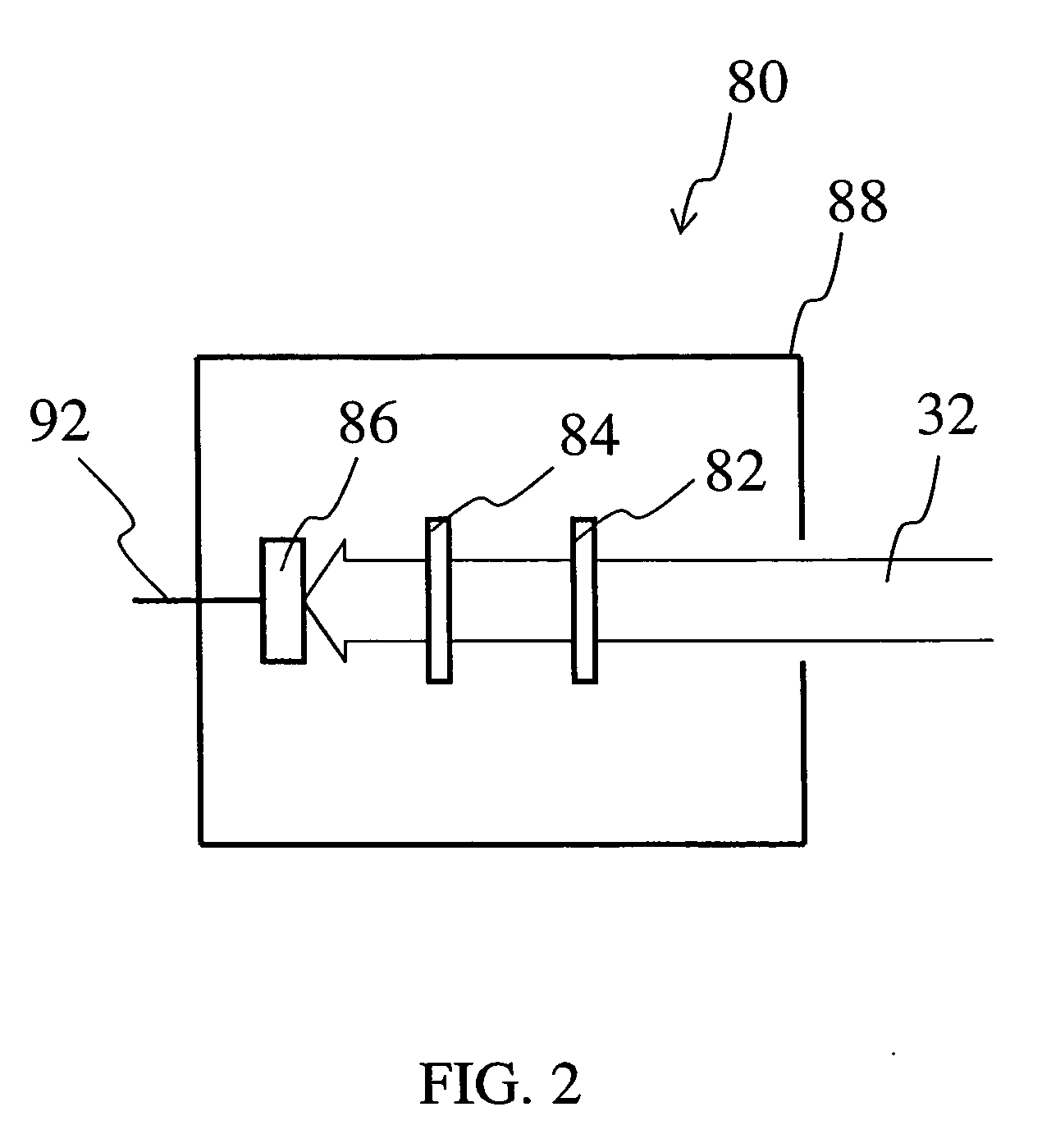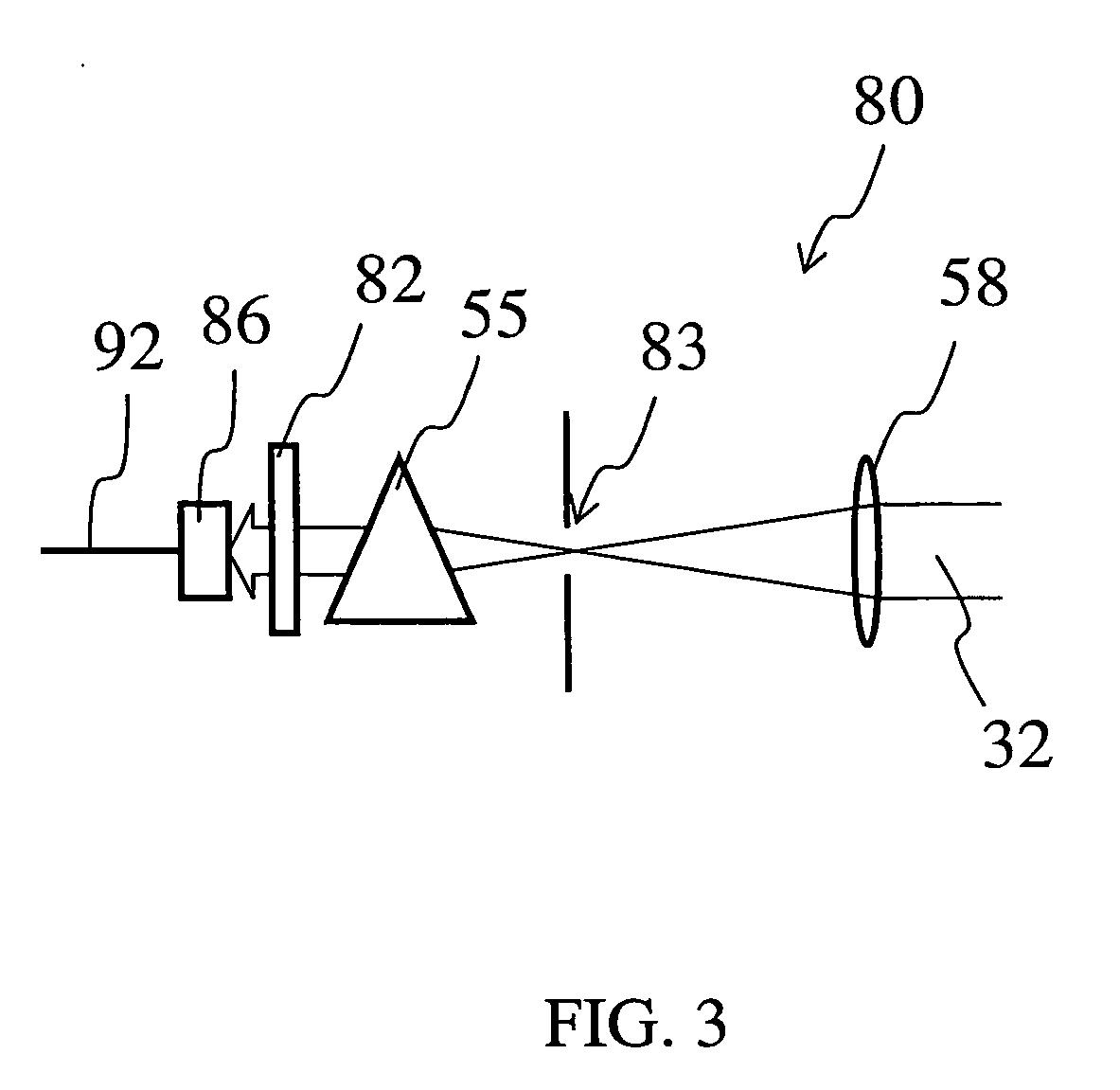Glass composition fluorescent at infrared wavelengths
a glass composition and infrared wavelength technology, applied in the field of glass composition, can solve the problems of glass composition devitrification, limited wavelength range of light that can be amplified and wavelength, and limited extension of wavelength range to about 100 nm
- Summary
- Abstract
- Description
- Claims
- Application Information
AI Technical Summary
Benefits of technology
Problems solved by technology
Method used
Image
Examples
example 1
[0064] Commercially available boron oxide, alumina, lithium carbonate, sodium carbonate, potassium carbonate, magnesium oxide, calcium carbonate, strontium carbonate, barium carbonate, titania, zirconia, zinc oxide, bismuth trioxide (Bi2O3), etc were weighed so that the respective compositions indicated in Table 1 were obtained. Thus raw material batches were prepared.
[0065] For the purposes of preventing bismuth trioxide from being reduced unnecessarily and refining glass, magnesium sulfate (MgSO4) that was a commercially available reagent was used as a part of the MgO raw material. In the composition containing Na2O, sodium sulfate (Glauber's salt, Na2SO4) was used as a part of the Na2O raw material. The content of such sulfates was determined so that the mole ratio thereof to bismuth trioxide was at least 1 / 20.
[0066] Each batch thus prepared was put into an alumina crucible and was kept in an electric furnace at 1400° C. for four hours. Thereafter, the molten batch...
example 2
Phosphate Glass
[0074] In this example, glass compositions were obtained using three types of production methods A to C.
[0075] Production Method A (Method Including Melting After a Heat Treatment)
[0076] Ammonium dihydrogen phosphate, alumina, lithium carbonate, sodium carbonate, potassium carbonate, magnesium oxide, calcium carbonate, strontium carbonate, barium carbonate, titania, zirconia, silica, zinc oxide, bismuth trioxide, etc that were commercially available raw materials were weighed so that the respective compositions indicated in Table 3 were obtained. Thus raw material batches were prepared. Instead of the above-mentioned ammonium salt, other salts or phosphoric acid may be used as a phosphorus supply source.
[0077] As in Example 1, magnesium sulfate (MgSO4) that was commercially available as a reagent also was used as a part of the MgO raw material in this example. In the composition containing Na2O, sodium sulfate (Glauber's salt, Na2SO4) was used as a part of the Na2...
example 3
[0093] An optical fiber sample was produced and optical amplification characteristics thereof were determined. The optical fiber sample was produced so as to have a core diameter of 50 μm. In the optical fiber sample, a glass having a composition of Sample 21 was used as a core glass while a glass having a composition that was the same composition as that of Sample 24 but was free from Bi2O3 was used as a clad glass. The optical fiber sample was cut into a length of 10 cm so as to have sections that were specular surfaces.
[0094] When intermittent irradiation of excitation light with a constant intensity was carried out with a chopper (omitted in FIG. 4) in a constant cycle while signal light with a wavelength of 1314 nm was allowed to enter the optical fiber sample, the intensity of the signal light increased during the irradiation of excitation light. FIG. 10 shows the results of the measurement of variations in signal light intensity that was carried out with an oscilloscope. It ...
PUM
| Property | Measurement | Unit |
|---|---|---|
| wavelength range | aaaaa | aaaaa |
| half-height width | aaaaa | aaaaa |
| wavelength range | aaaaa | aaaaa |
Abstract
Description
Claims
Application Information
 Login to View More
Login to View More - R&D
- Intellectual Property
- Life Sciences
- Materials
- Tech Scout
- Unparalleled Data Quality
- Higher Quality Content
- 60% Fewer Hallucinations
Browse by: Latest US Patents, China's latest patents, Technical Efficacy Thesaurus, Application Domain, Technology Topic, Popular Technical Reports.
© 2025 PatSnap. All rights reserved.Legal|Privacy policy|Modern Slavery Act Transparency Statement|Sitemap|About US| Contact US: help@patsnap.com



